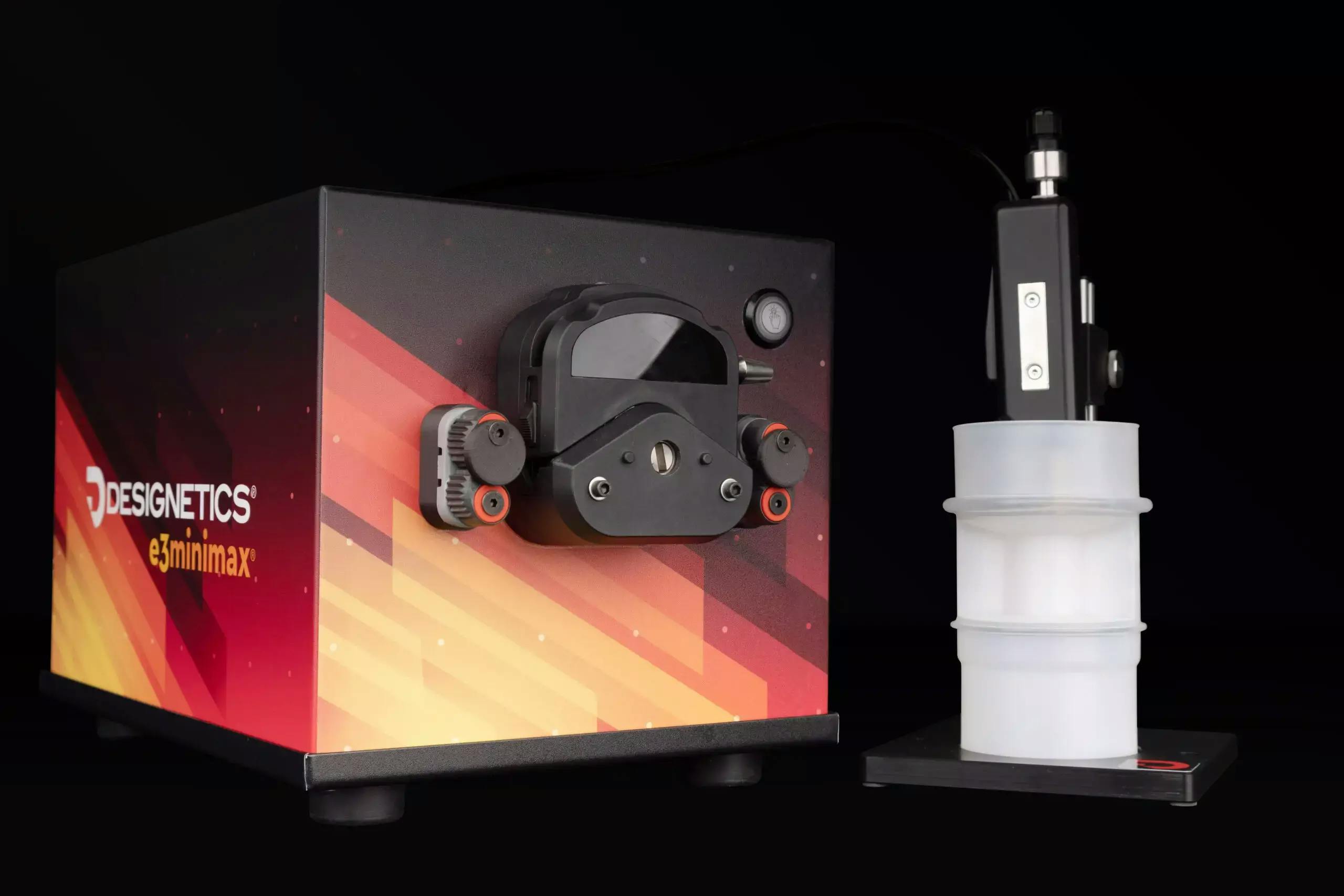Important Dispensing System Considerations
Fluid application involves precise parameters and a high degree of variability. Just one millimeter can make a difference in the quality of dispensing. That’s why open and clear communication between the material supplier, equipment supplier and customer are crucial during the discovery process.
Material Type
Material selection determines the integrity of a fluid’s bond to a substrate and whether your product performs exactly as you want it to once it’s assembled. Our team can work directly with your material supplier to confirm the applicability of certain chemical formulations. Different materials have different benefits:
- Epoxies are high-shear and may be custom formulated
- Polyurethanes are highly flexible and hold up well in corrosive environments
- Acrylics can bond to dissimilar substrates
- Silicones are excellent for sealing
The Designetics team will gather specific information about your material’s properties prior to designing a fluid dispensing system. A few of the properties we examine include:
- Viscosity and shear
- Gravity or density
- Mix ratio
- Moisture sensitivity
- Pot life
- Safety and handling
Equipment Design
Material parameters play an important role in the design of dispensing systems. With a high-viscosity material, fluid shear can negatively impact the quality of an application. A positive displacement pump such as the e3minimax uses a servo-driven pump to move fluids gently and reduce any breakage between layers.
You should also consider how a material’s properties can impact machine operations. If your application requires a non-drip material, snuff-back technology can provide clean, sharp cutoff, even on high-speed production lines. A remote-triggered pump panel like the e3mini gives you complete control over the dispensing process, delivering precise amounts of fluid to the applicator at a consistent feed rate.
Material Supply
Materials come in many different forms and must be transferred from their containers before being metered, mixed and dispensed. Depending on the viscosity of the fluid, the system can be gravity or pressure fed. Part size, production rate, manufacturing environment and dispensing frequency will determine the best dispensing system for your application. And each provides different levels of accuracy, precision and reliability.
Positive displacement pumps – including peristaltic pumps – operate by feeding liquid through a length of flexible tubing. Rollers compress the tubing against the pump housing. The rotation of the rollers traps a fixed volume of liquid in a cavity, or pocket, before forcing the material into a tube that feeds the applicator.
Fluid dispensing systems using peristaltic pumps offer ideal flow regulation, speed control and system compatibility. They are also contamination-free and extremely low maintenance.
Dispensing
If you’re working with solids and solvents, you’ll need to ensure those components are mixed before dispensing. Proper mixing reveals the intended properties of the materials. Used in conjunction with an e3mini or e3multi precision pump panel, our Bottle Holder with add-on stir plate ensures solids and solvents stay mixed. The unit includes a weight sensor that monitors the bottle and, when the material level in the bottle falls below the set point, a low material level alert will appear on the HMI screen.
Whether you’re applying primer, adhesive or another material to glass, metal, plastic, rubber or wood, the efficiency of your fluid dispensing system is determined by the quality of its applicators. To maximize applicator longevity and ensure precise, repeatable results, those applicators must be used and maintained properly.
Automation
Increased part volumes and higher quality standards have forced production engineers to reevaluate the fluid dispensing systems used in their manufacturing operations. Difficult, dangerous or repetitive processes can be streamlined with a simple system upgrade.
Automation increases productivity, quality and throughput while keeping costs low. Precision pump panels including the e3mini, e3multi and e3minimax provide “hands-off” fluid application, allowing operators to focus on higher-level tasks. With a fast and simple setup via an HMI or web-based interface, the e3 series of fluid application systems can be operated in “auto” mode, making them compatible with any robotic system or automated workflow.
Wrap Up
We understand that when it comes to fluid application, the right questions lead to the best solutions. Our team will do a deep dive to understand your fluid and substrate, current process, challenges and goals. We listen and ask questions to determine if a manual, semi- or fully-automated fluid application system is right for your operation.
Our engineers have developed a wide range of innovative dispensing technologies to accommodate highly variable adhesives and sealants. We’ve created thousands of proprietary fluid applicators and dispensing tips, including brush, channel, dauber, round, flat and wraparound tips. If those don’t suit your application, we can create a custom fluid applicator based on your specific needs.
